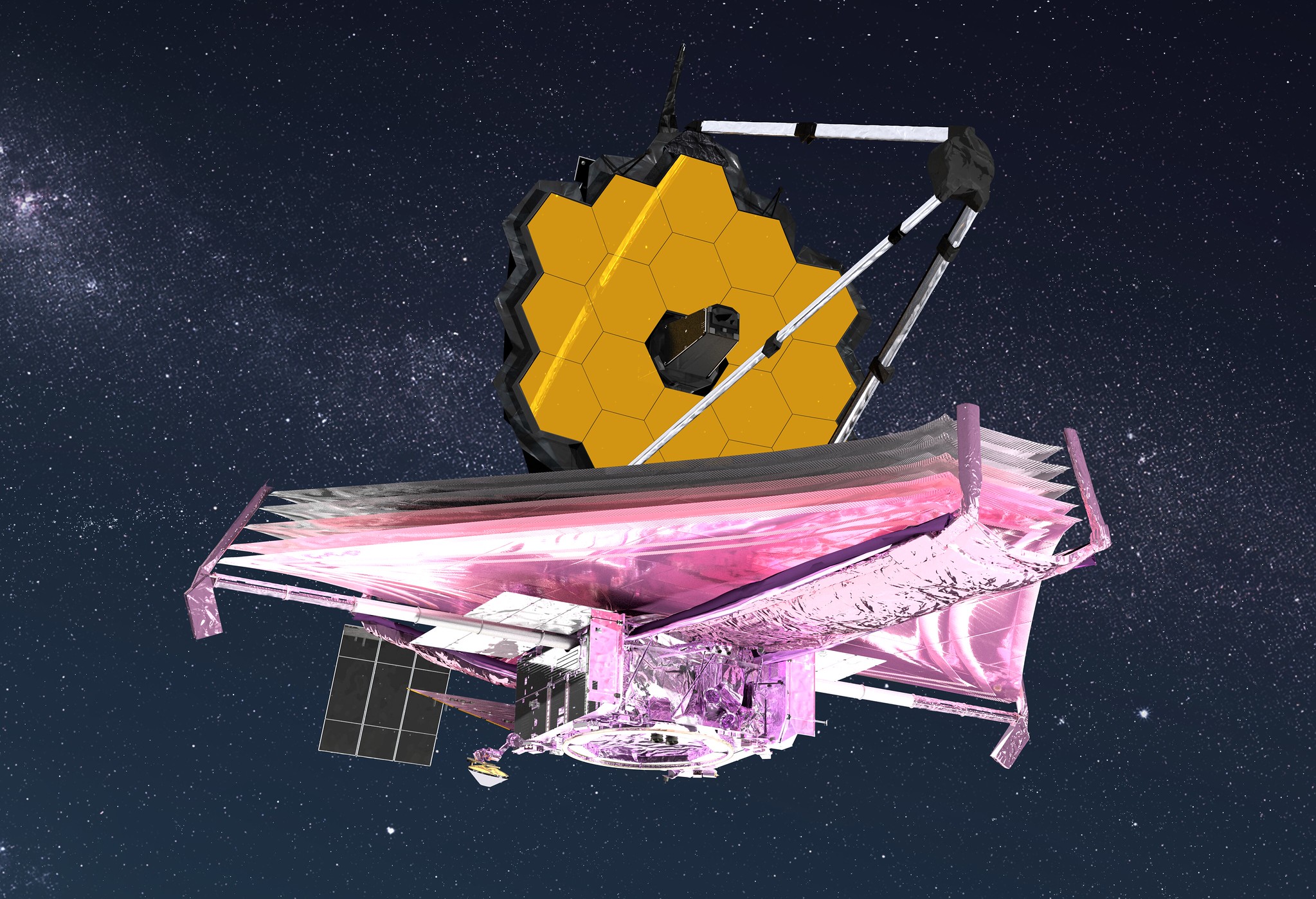Swinburne astronomers with front row seat to scientific history

The James Webb Space Telescope is one of the most ambitious science experiments of the 21st century. Picture: NASA (supplied).
In summary
- Distinguished Professor Karl Glazebrook and Associate Professor Ivo Labbe are leading projects awarded precious time in the first observation cycle of the James Webb Space Telescope
- The telescope is blasting off on or after 24 December 2021 after decades of development and USD$10 billion spent
- The telescope is up to a million times more sensitive in the infrared than any ground-based telescope and will enable a new generation of astronomical discoveries
Two Swinburne scientists are leading projects awarded precious time in the first observation cycle of the James Webb Space Telescope, helping them see far deeper into the universe than Hubble and examine the first stars and galaxies formed after the Big Bang.
Distinguished Professor Karl Glazebrook, ARC Laurate Fellow and Distinguished Professor at the Centre for Astrophysics and Supercomputing, and Associate Professor Ivo Labbe, Senior Research Fellow at the Centre for Astrophysics and Supercomputing, will both lead projects utilising the telescope’s game-changing infrared capabilities.
Distinguished Professor Glazebrook said the impact of the telescope could not be overstated.
‘The telescope is up to a million times more sensitive in the infrared than any ground-based telescope,’ Distinguished Professor Glazebrook said.
‘If everything goes to plan, this will be one of the greatest scientific achievements of the 21st century and will enable a new generation of astronomical discoveries.’
Associate Professor Labbe agrees, ‘This telescope will revolutionise the study of space. Our Treasury project in particular will push the telescope to its limit and see back to the beginning of time, to the first stars and galaxies forming after the Big Bang, to solve some of the greatest mysteries of the universe.’
There are only a few programs with prestigious Treasury status, which are expected to achieve the highest impact discoveries.
An out-of-this-world scientific achievement
The James Webb Space Telescope is blasting off on or after December 24 after decades of development and USD$10 billion spent, marking the high-risk first stage in one of the most ambitious science experiments of the 21st century.
Distinguished Professor Glazebrook and Associate Professor Labbe will join thousands of scientists nervously watching the telescope over the next few months.
‘The launch is just the beginning,’ says Distinguished Professor Glazebrook said. ‘There are over 300 potential points of failure, many of them related to the telescope’s intricate deployment mechanisms. After a 30-day cruise to orbit, this will all happen more than 1.5 million km from Earth, about 4 times further away from us than the Moon.’
Swinburne Chief Scientist and Acting Deputy Vice-Chancellor (Research) Professor Virginia Kilborn welcomed the outcomes of the Swinburne research that would be enabled by the launch of the telescope.
‘To have, not one, but two Swinburne researchers leading projects on the first observation cycle of this once-in-a-generation telescope is a phenomenal achievement for Karl, Ivo and the entire university team,’ she said.
‘This achievement speaks to Swinburne’s global leadership position in space and aerospace technology and the pioneering research we are conducting in astrophysics with organisations in Australia and around the world.’
In another Australian connection to the launch, the Canberra Deep Space Communication Complex (CDSCC), which is managed by CSIRO on behalf of NASA, will be the first to provide contact with the James Webb Space Telescope as it commences its mission.
The telescope is a joint initiative of the National Aeronautics and Space Administration (NASA) in the US, the European Space Agency (ESA) and the Canadian Space Agency (CSA).
-
Media Enquiries
Related articles
-

- Astronomy
High school students work with Swinburne astronomers on the future of space
Swinburne’s Youth Space Innovation Challenge has inspired over 330 Australian teenagers to pursue a career in STEM.
Friday 26 July 2024 -

- Astronomy
- Science
Swinburne appoints new Director of Innovative Planet Research Institute
Leading geodesy expert, Professor Allison Kealy, has been appointed as the inaugural Director of Swinburne University's Innovative Planet Research Institute.
Monday 22 April 2024 -

- Astronomy
- University
OzGrav 2.0: A ‘new era of astrophysics’ launched at Swinburne
The next phase in the world-leading ARC Centre of Excellence for Gravitational Wave Discovery, dubbed 'OzGrav 2.0', launched this week at Swinburne University of Technology.
Wednesday 17 April 2024 -

- Design
- Astronomy
- Technology
- University
Swinburne ‘Rock Muncher’ takes part in Australian Rover Challenge
A multidisciplinary student team from Swinburne University of Technology competed in the 2024 Australian Rover Challenge held in Adelaide, South Australia.
Thursday 11 April 2024 -
.jpeg/_jcr_content/renditions/cq5dam.web.256.144.jpeg)
- Astronomy
New JWST observations reveal black holes rapidly shut off star formation in massive galaxies
New research showcases new observations from the James Webb Space Telescope that suggest black holes rapidly shut off star-formation in massive galaxies by explosively removing large amounts of gas...
Tuesday 23 April 2024

